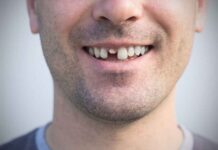Orthodontic treatment goes beyond improving smiles; it can also play a significant role in alleviating sleep disorders. Misaligned teeth and jaw issues can contribute to sleep apnea and other disturbances. This article explores how orthodontic solutions can enhance sleep quality and overall health by addressing these underlying problems.
Additionally, incorporating myofunctional therapy can further support orthodontic treatment by promoting proper oral function and muscle coordination, ultimately improving airway management and sleep quality.
1. Understanding Sleep Disorders and Their Causes
Sleep disorders, such as insomnia, sleep apnea, and restless leg syndrome, disrupt normal patterns and can stem from physical issues like obesity or psychological factors like anxiety. Anatomical factors, including jaw misalignment, often contribute to these disorders, emphasizing the need for a comprehensive treatment approach that includes dental health.
2. The Role of Jaw Alignment in Sleep Quality
Jaw alignment significantly impacts sleep quality by influencing airway function. Misaligned jaws can restrict airflow, leading to obstructive sleep apnea (OSA), which causes breathing interruptions and snoring. Proper alignment helps maintain an open airway, reducing sleep disturbances. Orthodontic evaluation is essential for individuals with sleep disorders to improve overall health.
3. How Orthodontic Treatment Works
Orthodontic treatment primarily focuses on correcting misaligned teeth and jaw structures to improve oral function and aesthetics. Methods such as braces, clear aligners, and other appliances gradually shift teeth and realign the jaw. This process involves applying gentle pressure over time, allowing teeth to move into their proper positions. Orthodontic treatment can also address bite issues that may affect airway function, enhancing airflow during sleep. By creating a more balanced bite and aligning the jaw, orthodontics not only improves dental health but can also play a crucial role in alleviating sleep-related issues, contributing to overall well-being.
4. Benefits of Orthodontic Treatment for Sleep Disorders
Orthodontic treatment can offer numerous benefits for individuals suffering from sleep disorders. By realigning the jaw and teeth, orthodontics can help open the airway, reducing the risk of obstructive sleep apnea and other sleep-related breathing issues. Improved jaw alignment can also alleviate teeth grinding (bruxism), which often disrupts sleep. Additionally, correcting bite issues can enhance overall oral health, reducing discomfort and improving function. Patients often report better sleep quality, increased energy levels, and improved concentration after treatment. Overall, orthodontic interventions can lead to significant enhancements in sleep quality and health.
5. Seeking Professional Help: What to Expect
When seeking professional help for sleep disorders related to orthodontic issues, the first step is to consult with a qualified orthodontist or dentist. During the initial evaluation, they will assess your oral health, jaw alignment, and any specific symptoms you may be experiencing. Diagnostic tools such as X-rays and sleep studies may be employed to gain a comprehensive understanding of your condition. Following this assessment, your orthodontist will recommend a personalized treatment plan tailored to address your specific needs. Treatment may involve braces, aligners, or other appliances, with regular follow-up appointments to monitor progress and ensure effective relief.
In conclusion, orthodontic treatment can significantly alleviate sleep disorders by correcting jaw alignment and improving airway function. By addressing dental issues that contribute to conditions like sleep apnea, individuals can experience better sleep quality and overall health. Consulting a qualified orthodontist is essential for effective diagnosis and treatment.







